An accessible bathroom is crucial for ensuring safety, comfort, and independence for everyone. An accessible bathroom doesn’t mean you have to sacrifice style for function. It’s about designing a space that meets your needs while reflecting your personal style. Whether it’s designed for those with mobility challenges, the elderly, or simply for added convenience, the right features can turn a bathroom into a practical and stylish space. In this guide, we will examine the key elements that make a bathroom both accessible and visually appealing.
1. Walk-In Shower

A walk-in shower is an excellent choice for creating an accessible bathroom that is both functional and stylish. It is beneficial for individuals with mobility challenges, such as those who use wheelchairs, walkers, or other mobility aids. The open design eliminates barriers such as traditional shower doors or steps, providing more space to move around and easier access, making it safer and more comfortable for individuals with limited mobility. Adding a frameless glass panel can enhance the design, bringing in more natural light and a touch of elegance.
One of the key benefits of a walk-in shower is its flexibility in meeting different needs while offering a modern and clean look. The spacious layout allows for greater freedom of movement and reduces the risk of tripping over thresholds. In short, a walk-in shower brings together practicality, accessibility, and style, transforming the bathroom into a welcoming and sophisticated space.
2. Grab Bars
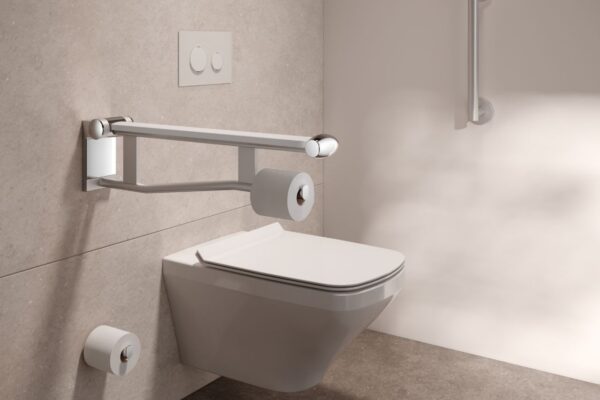
Grab bars are a vital safety feature in any bathroom, especially for individuals with limited mobility, the elderly, or those recovering from surgery or injury. These straightforward yet effective fixtures provide much-needed stability and support, reducing the risk of slips, falls, and accidents in the slippery bathroom environment. Properly placed grab bars near the shower, toilet, or bathtub can provide users the leverage they need to transition safely between sitting and standing positions.
Beyond their safety function, grab bars can also enhance the bathroom’s design. Available in a variety of materials, finishes, and styles, grab bars can be seamlessly integrated into the overall bathroom decor. Popular choices like stainless steel, chrome, and matte black finishes complement many bathroom colour schemes, adding to the space’s aesthetic. Some grab bars even come in decorative shapes or feature integrated towel racks, blending practicality with style. In summary, grab bars are a crucial feature in accessible bathrooms. They offer a perfect balance of safety, convenience, and design, making the bathroom both functional and visually appealing.
3. Accessible Bathroom Flooring
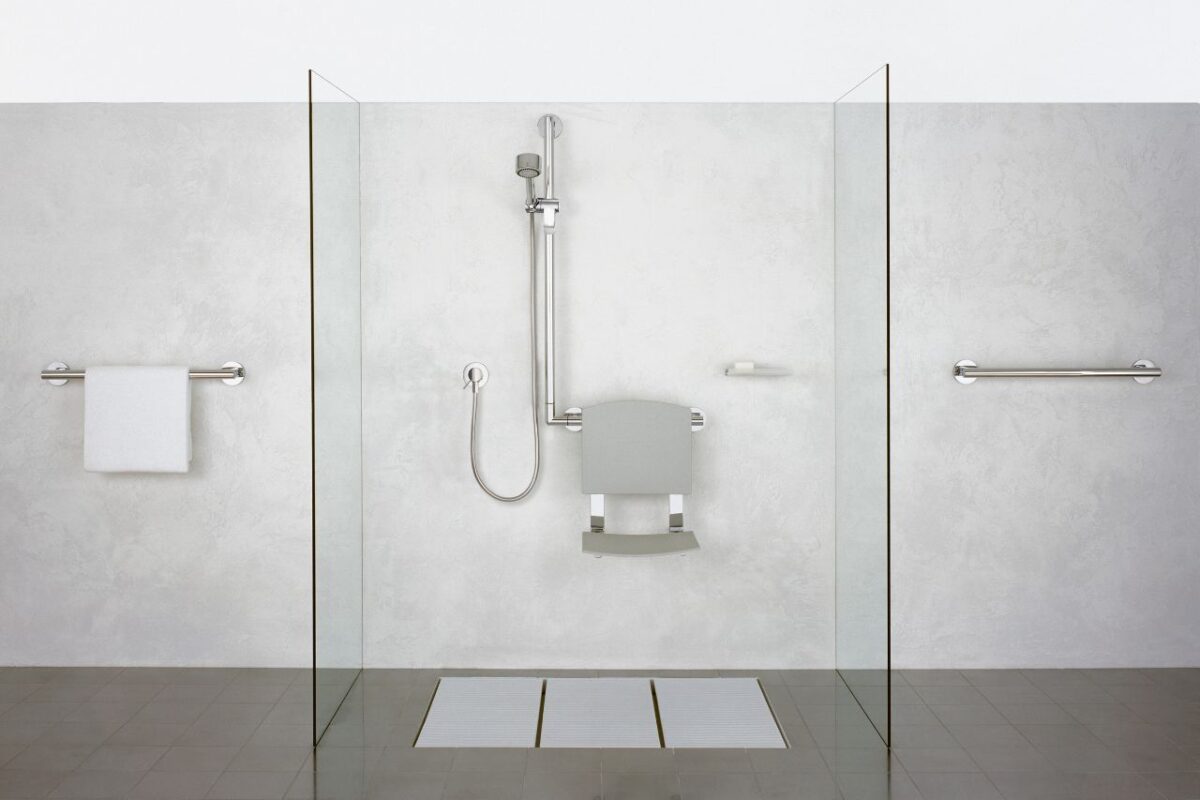
Bathroom flooring is a key factor in designing a safe, functional, and visually appealing space. It needs to withstand high moisture levels while offering comfort, slip resistance, and durability. One of the primary considerations when selecting flooring for a bathroom is ensuring it is slip-resistant. Wet floors can be dangerous, especially for individuals with mobility challenges, the elderly, or young children. Opting for materials that provide secure footing, even in wet conditions, is essential. Vinyl, rubber, and textured ceramic tiles are excellent choices for this purpose.
Many slip-resistant flooring options feature small grooves or patterns that enhance traction, making them particularly suitable for individuals who use mobility aids. It’s also important to select flooring with a consistent surface, avoiding sudden changes in texture or pattern, as these can pose tripping hazards. Altro safety flooring and Altro vinyl flooring are also excellent flooring choices, offering an effective anti-slip solution that seamlessly blends luxury with functionality.
Additionally, accessible bathroom flooring can include radiant floor heating, which offers warmth underfoot, adding extra comfort, particularly for individuals with mobility issues. This feature helps create a more pleasant environment, especially for those who may struggle with cold floors or need extra warmth for comfort and ease of movement.
4. Seating Options
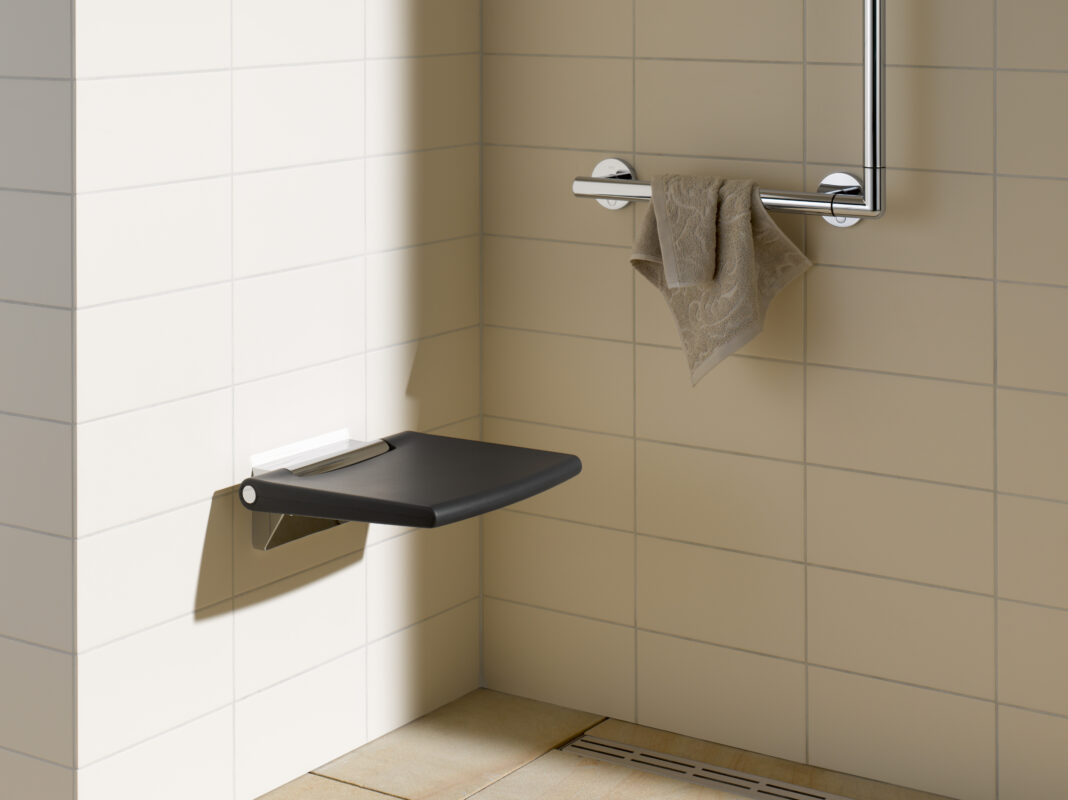

In an accessible bathroom, seating options are crucial not only for comfort but also for safety and ease of use. Whether in the shower, by the toilet, or at the vanity, providing the proper seating helps individuals with mobility challenges maintain independence and feel more comfortable in their space. Shower Seats and Benches are ideal for those with limited stamina, balance issues, or difficulty standing for long periods. These seats offer a safe place to sit while showering or bathing, significantly reducing the risk of falls. Many modern shower seats are designed to be foldable or removable, offering flexibility and space-saving benefits when not in use. Built-in shower benches can also be a permanent solution for added comfort and convenience.
For toilets, additional seating solutions can significantly enhance comfort and safety. Raised toilet seats are a common feature, as they make it easier for individuals with limited mobility to sit down and stand up. The right height for these seats is essential, ensuring a smoother transition from a wheelchair or walker. At the vanity, a height-adjustable stool or chair can offer support while grooming or performing other tasks, allowing for easy access to the sink or mirror. It’s essential to ensure that these seating options are placed at the correct height to facilitate comfortable use for individuals who require assistance with transferring from mobility aids.
5. Floating Vanity and Sink
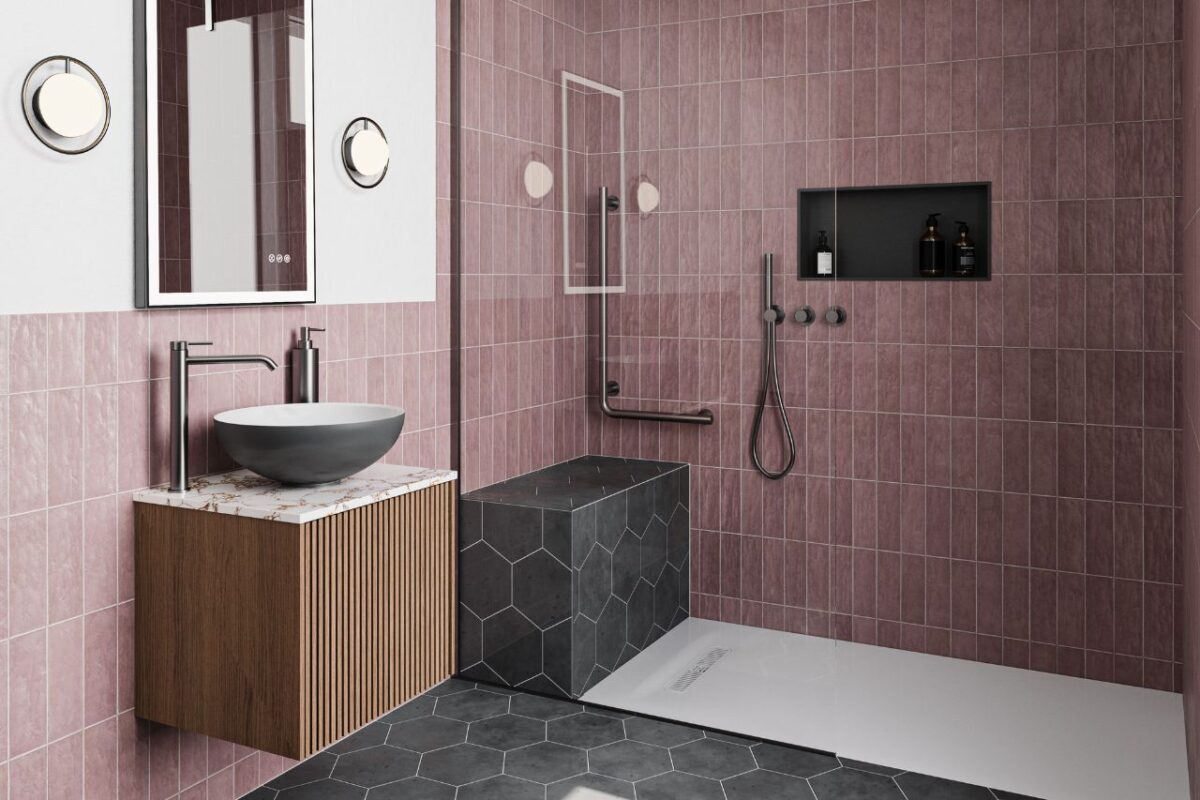
A floating vanity and sink are a great design choice for accessible bathrooms, combining a modern, sleek look with enhanced functionality. These fixtures are mounted directly to the wall, leaving the floor space beneath them open and unobstructed. This design creates more space and makes the area feel larger and more spacious. One of the key advantages of a floating vanity and sink is that they provide additional floor space, which is especially helpful for individuals who need to manoeuvre a wheelchair or walker. The open area underneath allows users to approach the sink comfortably, with enough room for their legs and feet to slide underneath. This is particularly beneficial for people who require a seated position while using the sink.
The height and depth of the vanity can be adjusted to suit the user’s specific needs. For instance, a floating vanity set at a lower height is ideal for individuals using wheelchairs or those who prefer to sit while performing tasks like washing their hands or brushing their teeth. Floating vanities and sinks offer the perfect balance of accessibility, style, and ease of maintenance. Their ability to free up floor space, combined with their modern design and practical features, makes them an excellent solution for creating a functional and accessible bathroom.
6. Accessible Bathroom Lighting
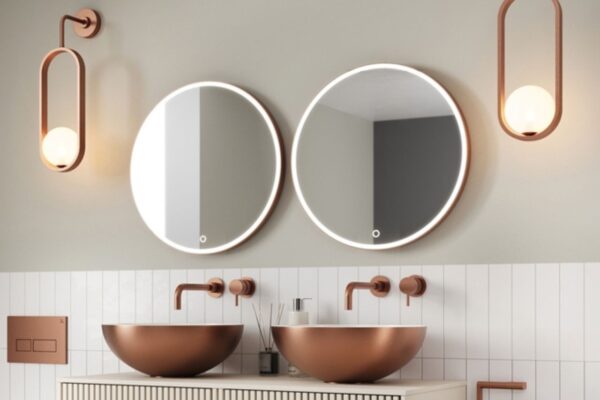
Lighting is a vital element in designing an accessible bathroom. It ensures both safety and visibility while enhancing the overall ambience and functionality of the space. In an accessible bathroom, lighting must be thoughtfully planned to meet the needs of individuals with varying degrees of mobility, vision impairments, or other specific requirements. Proper lighting can make the bathroom easier to navigate, improve safety, and create a comfortable, welcoming atmosphere. A combination of general and task lighting is essential for covering all aspects of the bathroom. General lighting provides the overall illumination needed for the entire space. This can be achieved with overhead ceiling lights or recessed lighting, which provide uniform light throughout the room.
Task lighting, on the other hand, focuses on specific areas where close-up work is needed, such as the vanity or shower. For individuals with vision impairments or those requiring additional support with grooming tasks, bright, focused lighting at the mirror or countertop is particularly important. This ensures that users can perform tasks like shaving, applying makeup, or brushing their teeth without struggling with shadows or dim areas. Proper lighting not only increases safety by eliminating dark spots but also enhances the bathroom’s overall functionality and accessibility, making the space easier and more comfortable to use for everyone.
7. Shower Features
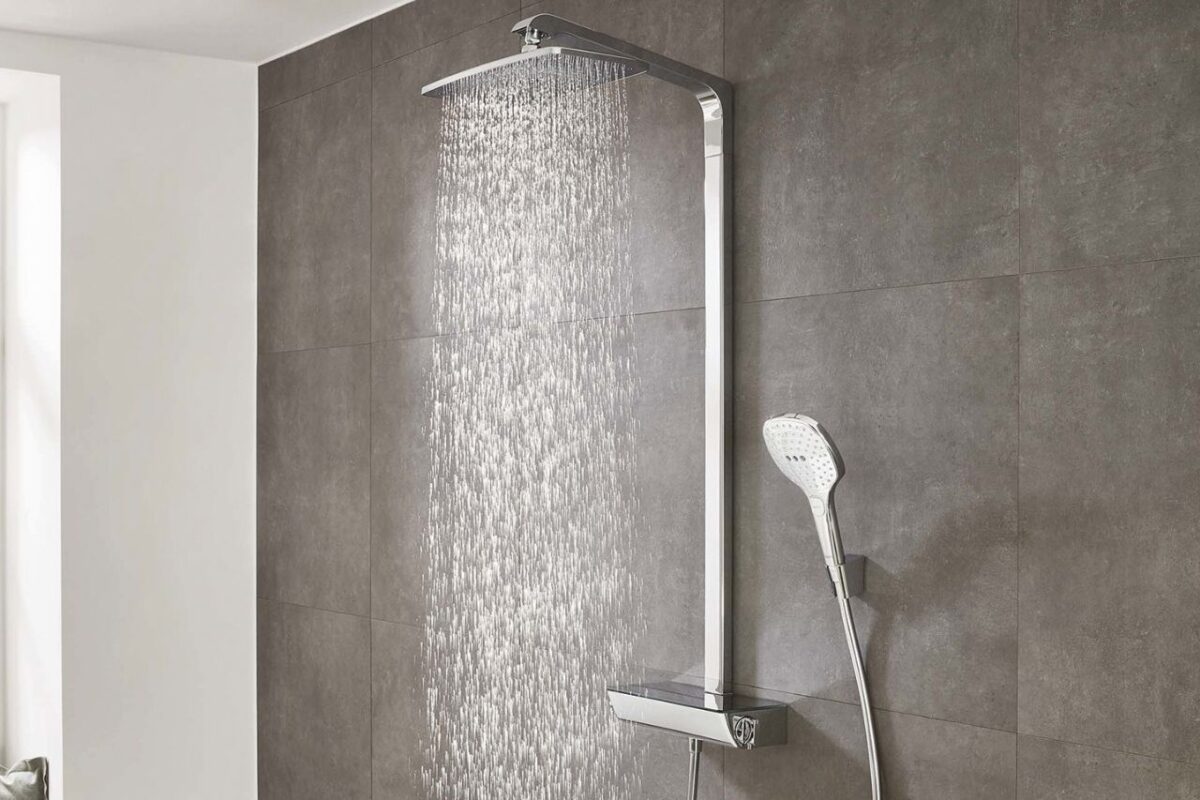
Shower features are crucial for safety, comfort, and independence. A well-designed shower can make a significant difference for individuals with varying mobility needs. A handheld showerhead is a valuable feature, as it enables users to control the water flow and direct it where needed. This is especially useful for those who need to sit while showering, as the showerhead can be adjusted without requiring them to stand or move around. This flexibility helps users feel more independent and comfortable.
Shower temperature control is another crucial aspect of shower safety. Anti-scald valves are particularly important in preventing water from reaching dangerously hot temperatures, which could cause burns, especially for seniors or individuals with diminished sensory perception. Installing a thermostatic valve allows users to set their preferred water temperature and maintain it throughout the shower. Incorporating these features into an accessible shower not only makes the bathroom safer but also enhances its overall functionality. These features make the shower safer, more comfortable, and easier to use for everyone.
Conclusion
In conclusion, an accessible bathroom is all about creating a space that prioritises safety, comfort, and independence, without compromising on style. By incorporating thoughtful features like walk-in showers, grab bars, and adjustable vanities, you can design a bathroom that accommodates everyone while still maintaining an elegant and modern appearance. With the right approach, your accessible bathroom can be both functional and a reflection of your personal style.

